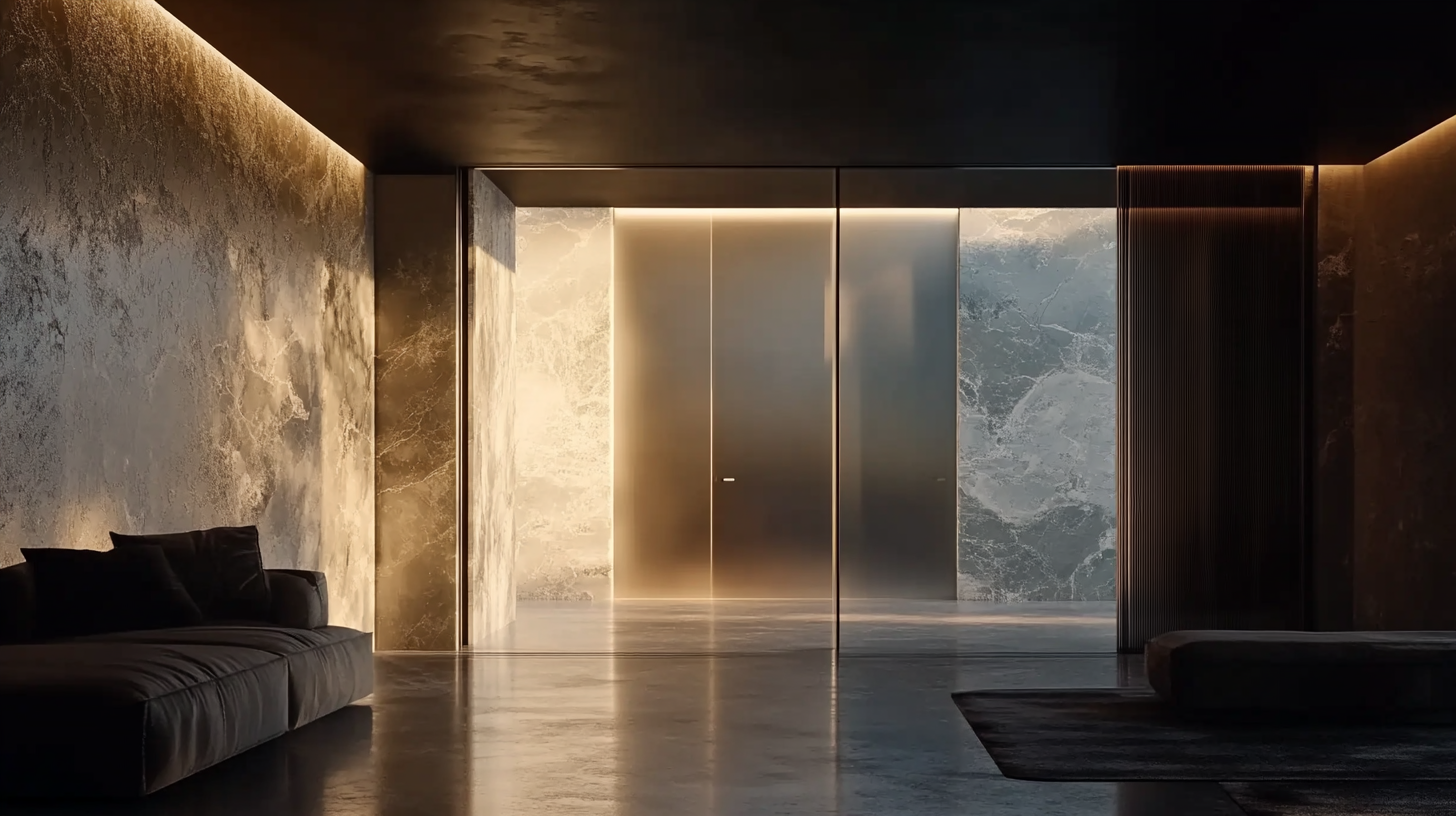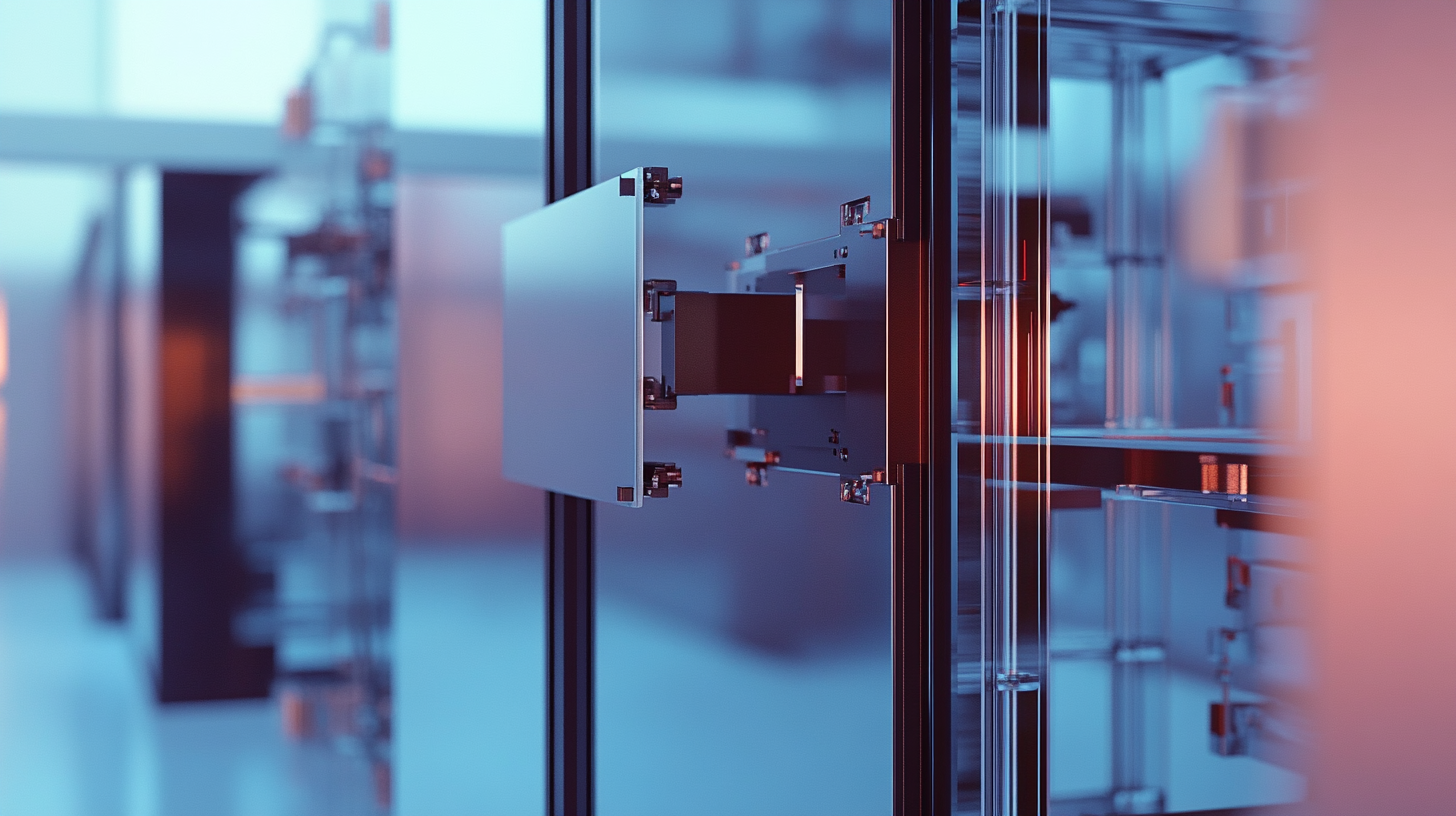The architecture and design fields have grown in leaps and bounds over the years, and one invention that stands out is the Sliding Door. These flexible entryways not only beautify a given space but also consider some practical applications for maximizing available space. Sliding Door technology has advanced to a level that entirely changed our thinking as to what an entryway ought to be, separation between spaces, and bringing ambience into our world with natural lighting. Everything from the traditional wooden Sliding Door to the highly modern automatic Sliding Door has been incorporating innovations and improvements to serve varying tastes and preferences of homeowners and businesses.
On this journey through the history and advancement of sliding door technology will be the actual materials, mechanisms, and designs that affected their development. From age-old sliding doors in Japan to ultra-modern glass ones found in contemporary homes, the tour hinges on innovation being at the heart of sliding doors becoming increasingly ingrained in people's hearts. This evolutionary understanding not only provides insight into the ingenuity behind these designs but also exemplifies their present-day relevance in creating functional, livable, and beautiful spaces.

Historical Overview of Sliding Door Designs
Sliding doors have transformed immensely from their earliest forms, demonstrating the interplay between ever-advancing technologies on one hand and evolving tastes on the other. The initial designs of sliding doors go back to the most ancient civilizations, using simple wooden or stone slabs to create doors for functional openings into the living room. As time progressed, these designs evolved toward using cutting-edge materials such as glass and metals, which both made them livelier and relatively more functional. This trend has also been witnessed in the last few years, with the emergence of the automated and smart sliding door systems that best exemplify the evolution of the technology. With the addition of sensors and control mechanisms, sliding door operation is becoming more convenient and efficient for its user, reflecting the modern-day demand of convenience and security. Additionally, automobile manufacturers have adopted sliding doors to demonstrate styling in their vehicles that meet customers' wants for unique and personalized features. This interplay between style and usability will further drive the future of sliding door technology in different sectors.

Advancements in Materials and Manufacturing Techniques
The way in which the sliding doors have progressed has changed entirely in the area of materials and manufacturing techniques. Schifts from simple, inexpensive construction toward smarter and more individualized solutions have caused the most radical changes in the design and production features of sliding doors. New materials, such as lightweight composites and durable polymers, have enhanced making the functionality and the aesthetic appeal of sliding doors.
This market is, in fact, under development as of the moment, with current trends showing an increase in consumer preference for sliding doors that are both automated and customized. Such move indicates how various sectors are trying toward developing intelligent systems. Thus, manufacturers with flexible production methods to specific consumer preferences adopt this trend, which reflects a wider trend in technology-people designing most products to be more user-friendly in their use while integrating into modern living and beautiful forms.

Integration of Smart Technology in Sliding Doors
The intelligent technology embedded in sliding doors has revolutionized the entire automotive industry, making automobiles completely more user-friendly as well as attractive. Today's inventions in automatic sliding doors, however, open just by touching them and provide no manual push at all. This becomes much easier for families and those carrying items or children.
Some of the recent models have incorporated many smart features in their sliding doors like gesture control and sensors to detect any close proximity of obstacles, ensuring security along with functionality. Not only does the design emphasis increase the artistic beauty of cars but it also optimizes aerodynamics. Manufacturers continue to work on refining their offerings; this leaves the future of sliding door technology on the cutting edge for the marrying possible scenarios of practicality and futurism.

Design Trends and Aesthetic Considerations
Design trends in sliding doors technology show great variance going by functional as well as aesthetic perspectives. Innovations like flexible sensors indicate that the idea of integrating advanced technology into daily objects, making sliding doors more smart than practical, is in itself a value-enhancing characteristic. Sensors therefore afford the doors an almost user-adaptive character that stands favorably in terms of enhancing accessibility and improving the user experience further.
While more recently, in automobile implementations, the evolution of modern door mechanisms such as sliding doors in electric cars denotes a shift in design philosophy. These most recently introduced functions have, of course, enhanced the convenience of a vehicle but have also brought in beauty. As the consumer market seeks more and more expressive design elements, sliding doors have become a signature from utility to modern design, representing sophistication and advanced engineering. Indeed, the fusion of technology and aesthetics is quite evidently paving for the future of all sliding door systems for respective applications.
Future Innovations in Sliding Door Functionality
As with the technologies of the sliding door progressing towards the brighter horizon, innovative approaches are on the way to improving the already more impressive performance and user interaction. The recent ideas indicate a trend toward more well-established sensor-based systems enabling the doors to operate in proximity of the user as he or she moves. Besides making buildings more accessible, it is also the approach designed to bring a revolution of increased energy efficiency inside buildings, which is why sliding doors would form a significant part of sustainable architecture.
In addition to all that, the adaptive gate mechanisms mimic biomimetics that really show the ability to present designs adaptable to environmental conditions. Sliding doors are intended to come closer to all these functions in being very natural to their users. This could redefine ways of building the modern living spaces with sliding doors that define much of a smart home ecosystem.
FAQS
Sliding doors can be traced back to ancient civilizations, where rudimentary wooden or stone panels were used to create openings in living spaces.
They have evolved from basic materials to more sophisticated ones like glass and metal, enhancing functionality and adding modern elegance.
Automated and smart sliding door systems have emerged, incorporating sensors and control mechanisms for improved user-friendliness and efficiency.
The automotive industry has adopted sliding door designs, showcasing innovative styles that cater to consumer demands for unique and personalized features.
Current trends emphasize the integration of advanced technology, like flexible sensors, making sliding doors not just practical but also smart and user-friendly.
Future innovations in sliding door technology, especially sensor-based systems, aim to improve energy efficiency in buildings, making them integral to sustainable designs.
Innovations are expected to enhance user experience with more sophisticated sensor systems that allow seamless operation in response to user movements.
Biomimetic designs aim to create sliding doors that are adaptive and intuitive, responding to environmental factors to enhance user interaction.
The melding of technology with aesthetic preferences signifies a shift from utilitarian functions to design elements that symbolize sophistication and advanced engineering.
As consumers increasingly value unique design elements, sliding doors have transitioned to become hallmarks of modern design, reflecting a blend of functionality and style.
Blog Tags:
- Sliding Door
- Aluminum Sliding Door
- Sliding Door Solutions
- Custom Sliding Doors
- Commercial Sliding Doors
- Sliding Door Manufacturers
- Sliding Door Systems
- Sliding Door Hardware